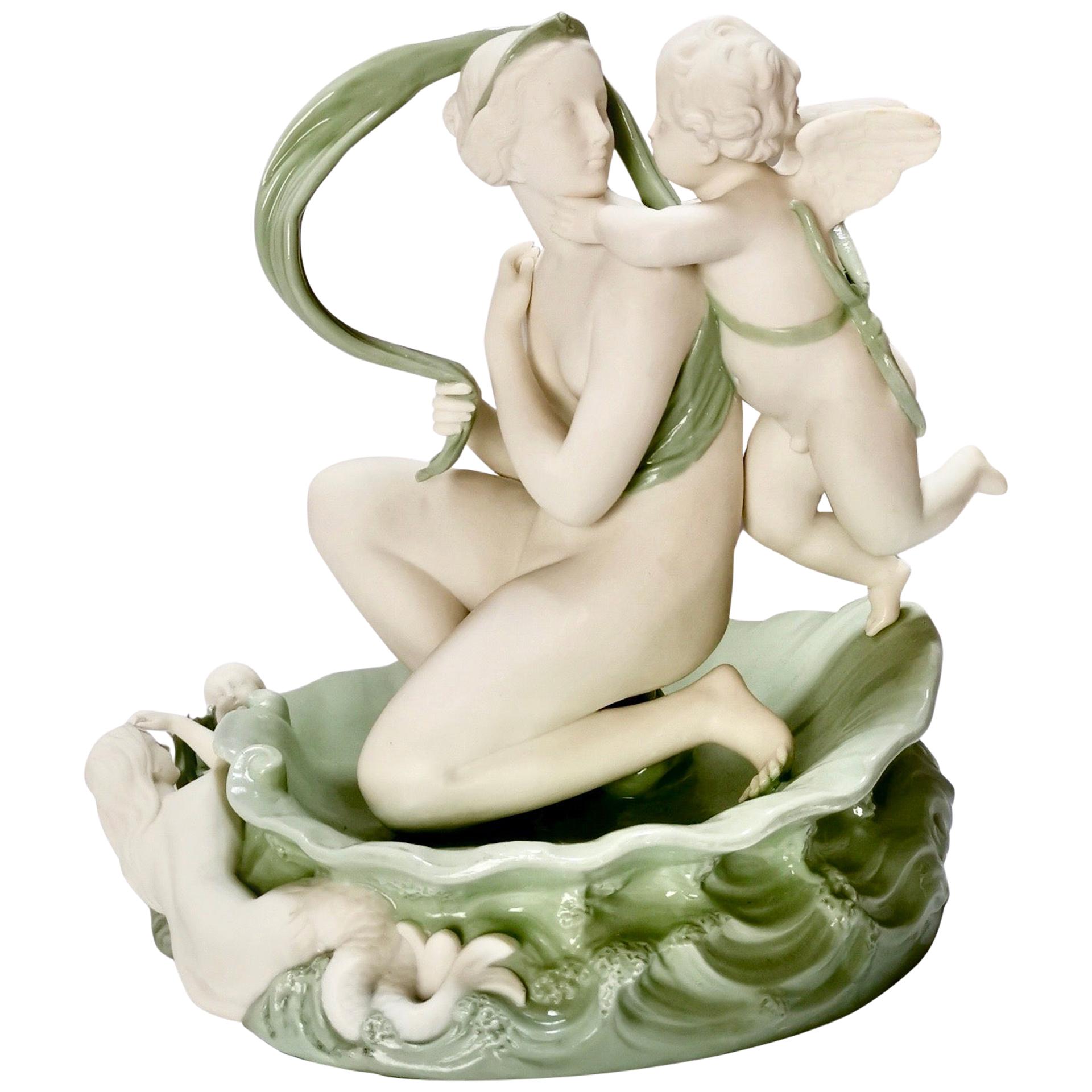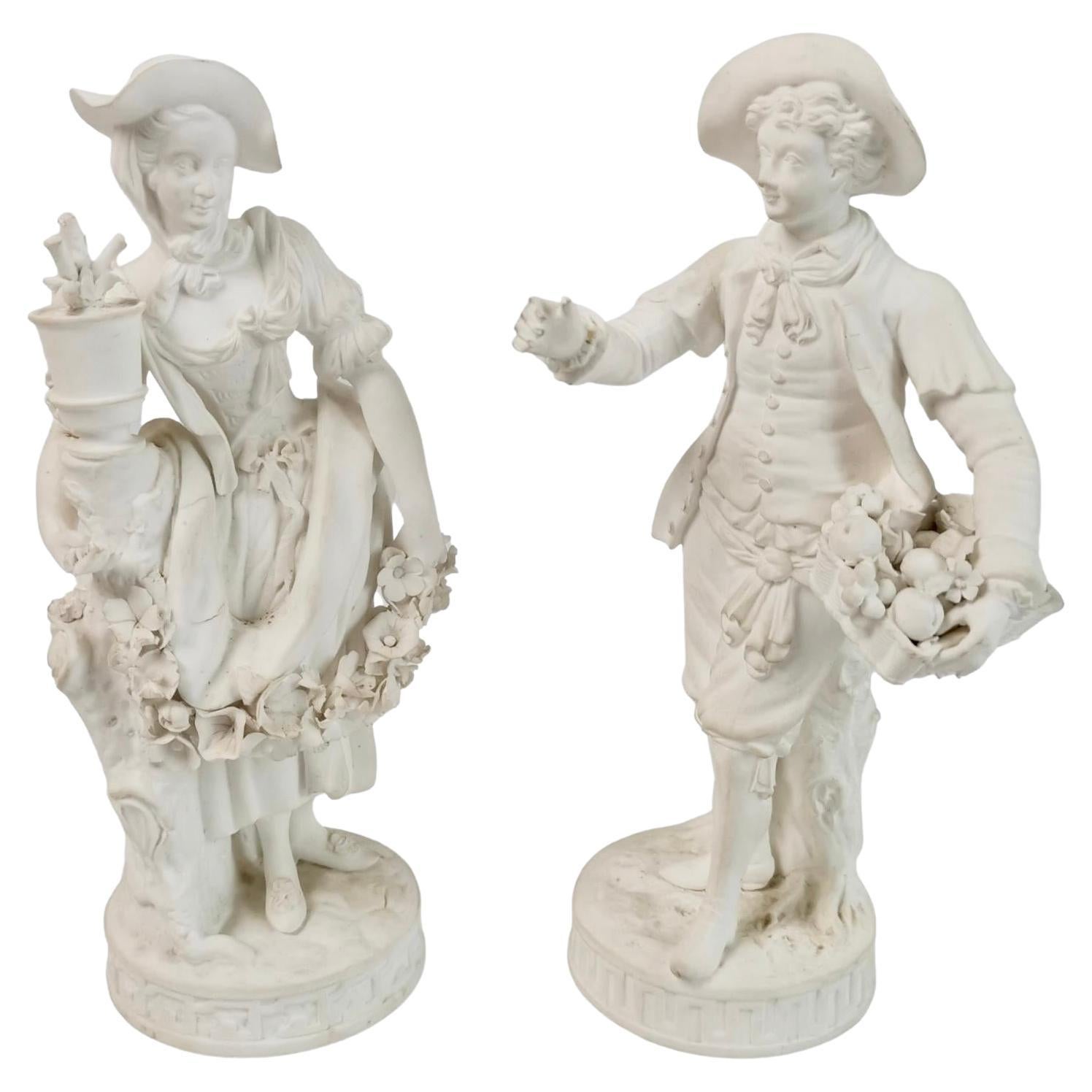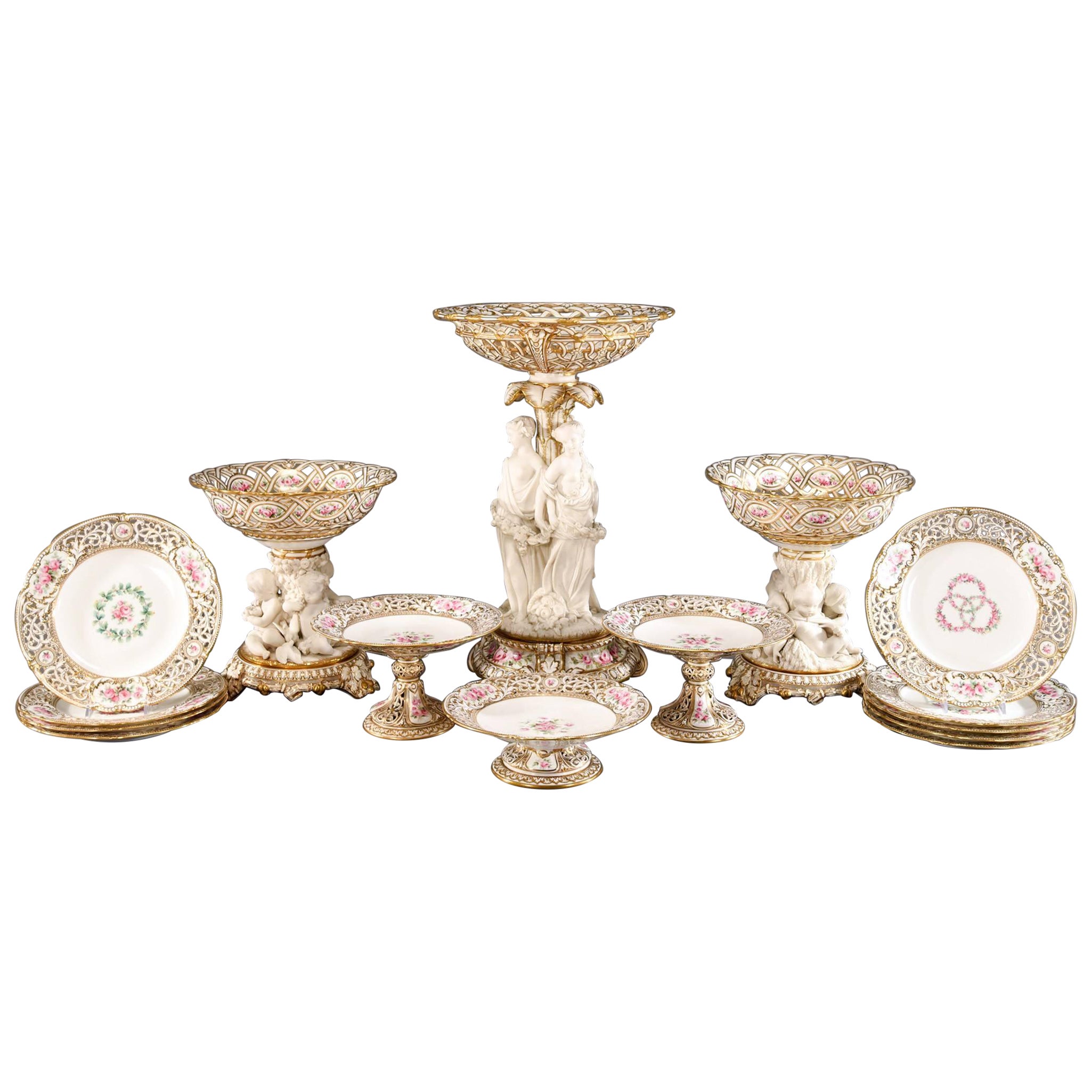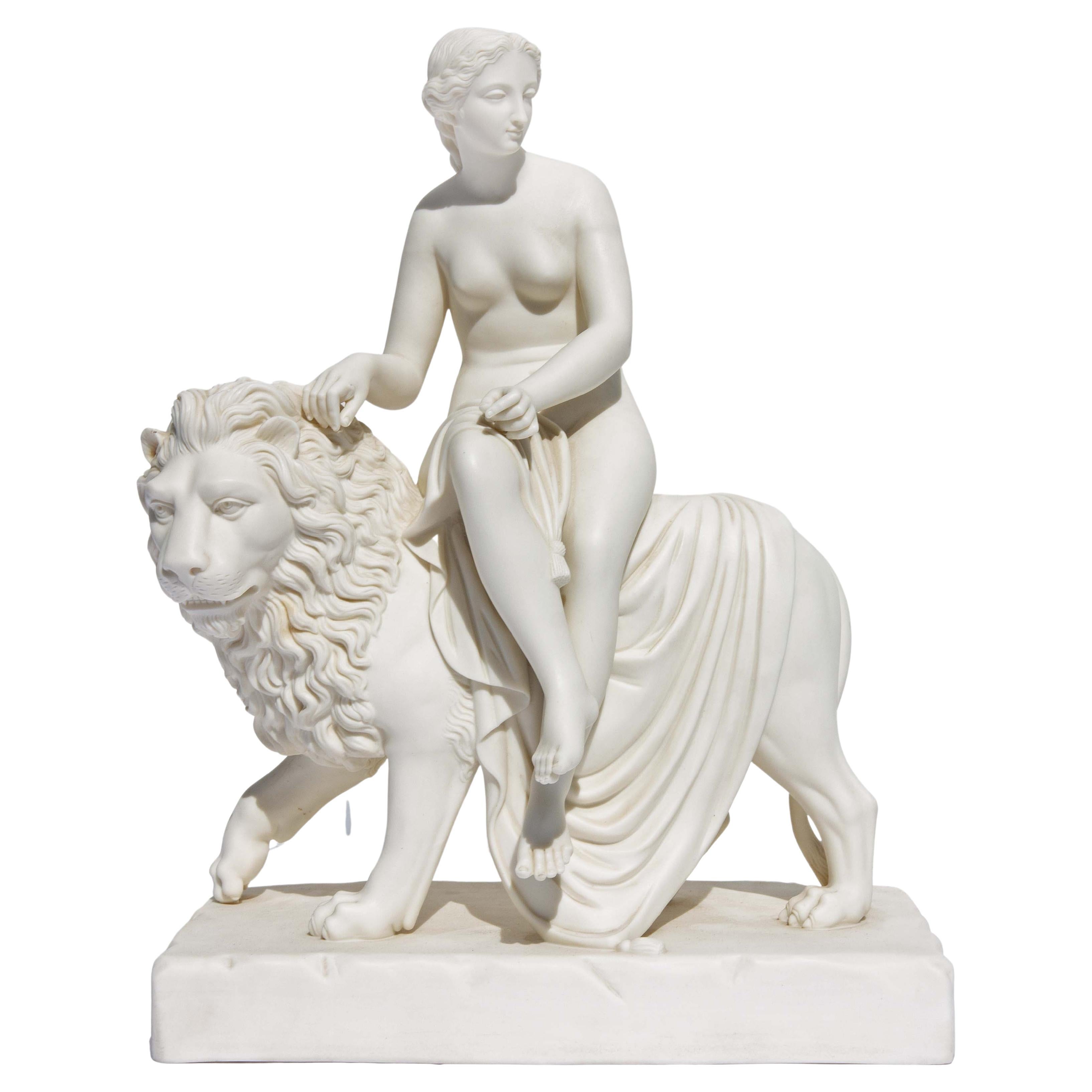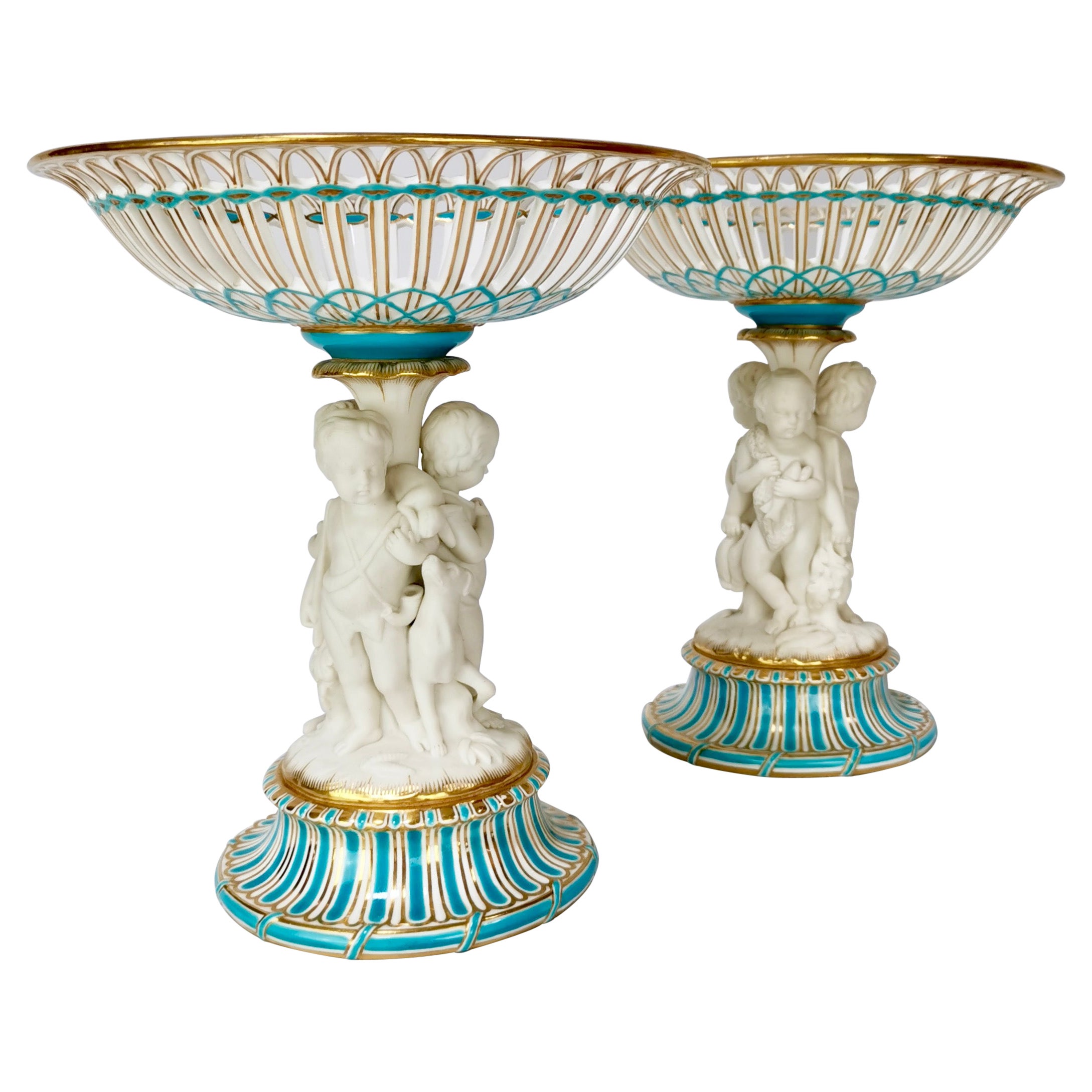Items Similar to White Parian Figures, L'Enfant Lisant et L'Enfant Écrivant, after Lemire 19thC
Want more images or videos?
Request additional images or videos from the seller
1 of 16
White Parian Figures, L'Enfant Lisant et L'Enfant Écrivant, after Lemire 19thC
About the Item
On offer is a superb pair of white parian figures, probably English and made in Staffordshire in the late 19th Century. The figures are after a pair of bronze models created by Charles-Gabriel Sauvage, also called Lemire, in about 1795. They originals were called "L'Enfant lisant et L'Enfant écrivant" or "Child Drawing" and "Child Writing" and today the originals can be found at the Louvre Museum in Paris. You can see a boy and a girl studying, seated on square bases. They would be perfect either for display on a piece of furniture, or on plinths.
These figures were made both in France and in England. These are not marked but the quality seems to be English parian porcelain from Staffordshire, possibly Minton, Copeland or Brownfield - but it could be any number of factories. These two are slightly different from many French models in the sense that they are less "cute" and angelic, less chubby, and a little more serious and precise in the way that both Minton and Copeland made their Parian figures. However, it is exactly in the precision of their concentration that these two are very moving.
These figures are part of the Neoclassical trend of the late 18th and early 19th Century, and this pair has been brought out both in parian porcelain and in bronze by many different makers throughout the 19th Century. This pair is particularly well made and given its high quality, it is very possible that it was made by Minton although there is no record of this.
The two little children are seemingly busy doing their homework; the girl (with a ribbon in her short cropped hair) is reading a book, the boy writing and chewing on his pen. The detail is superb, as visible in the pictures; each finger, toe and the folds of their garments is done with utter perfection. Their facial expressions are wonderfully alive... so ssssshh...! These two are very concentrated!
The figures are unmarked.
CONDITION REPORT Both figures are in perfect condition without any damage or repairs and no wear.
Antique British porcelain is never perfect. Kilns were fired on coal in the 1800s, and this meant that china from that period can have some firing specks from flying particles. British makers were also known for their experimentation, and sometimes this resulted in technically imperfect results. Due to the shrinkage in the kiln, items can have small firing lines or develop crazing over time, which should not be seen as damage but as an imperfection of the maker's recipes, probably unknown at the time of making. Items have often been used for many years and can have normal signs of wear, and gilt can have signs of slight disintegration even if never handled. I will reflect any damage, repairs, obvious stress marks, crazing or heavy wear in the item description but some minor scratches, nicks, stains and gilt disintegration can be normal for vintage items and need to be taken into account.
There is widespread confusion on the internet about the difference between chips and nicks, or hairlines and cracks. I will reflect any damage as truthfully as I can, i.e. a nick is a tiny bit of damage smaller than 1mm and a chip is something you can easily see with the eye; a glazing line is a break in the glazing only; hairline is extremely tight and/or superficial and not picked up by the finger; and a crack is obvious both to the eye and the finger. Etcetera - I try to be as accurate as I can and please feel free to ask questions or request more detailed pictures!
DIMENSIONS 35cm (13.75") high, base 14cm X 12cm (5.5" X 4.75").
- Creator:Minton (Maker)
- Dimensions:Height: 13.75 in (34.93 cm)Width: 5.5 in (13.97 cm)Depth: 4.75 in (12.07 cm)
- Sold As:Set of 2
- Style:Victorian (Of the Period)
- Materials and Techniques:
- Place of Origin:
- Period:
- Date of Manufacture:Late 19th Century
- Condition:Wear consistent with age and use. In perfect antique condition without any damage, repairs or wear.
- Seller Location:London, GB
- Reference Number:
About the Seller
5.0
Platinum Seller
These expertly vetted sellers are 1stDibs' most experienced sellers and are rated highest by our customers.
Established in 2016
1stDibs seller since 2019
208 sales on 1stDibs
Typical response time: <1 hour
- ShippingRetrieving quote...Ships From: Tenbury Wells, United Kingdom
- Return PolicyA return for this item may be initiated within 14 days of delivery.
More From This SellerView All
- Minton Celadon Parian Porcelain Sculpture, Venus and Cupid, Victorian, 1861By MintonLocated in London, GBThis is a beautiful celadon parian porcelain figure group made by Minton in 1861, which was the Victorian era. The group is of Venus and her son Cupid, seated in a shell. Minton w...Category
Antique 1860s English Victorian Figurative Sculptures
MaterialsPorcelain
- Minton Pair of White Biscuit Figures of Gardener and Lady, ca 1835By MintonLocated in London, GBThis is a very charming pair of white biscuit figures made by Minton in around 1835. The pair is actually a near-pair: the gentleman is a gardener with a basket of fruit, the lady ha...Category
Antique 1830s English Victorian Figurative Sculptures
MaterialsPorcelain
- Minton Pair of Tazzas, White Parian Porcelain Cherubs Hunting, Victorian ca 1880By MintonLocated in London, GBThis is a spectacular pair of tazzas or comports made by Minton in about 1880, which was the Victorian era. The stems of the tazzas hold three white Par...Category
Antique 1780s English Victorian Centerpieces
MaterialsPorcelain
- Bow Pair of Porcelain Figures, Arlecchino and Columbina, Rococo ca 1758By Bow PorcelainLocated in London, GBThis is a wonderful pair of figures of Arlecchino and Columbina, made by the Bow Porcelain factory in about 1758. These figures formed part of a series of the Commedia dell'Arte, a very popular series of theatrical figures that served as decoration at the dinner table in the 18th Century. The Bow Porcelain Factory was one of the first potteries in Britain to make soft paste porcelain, and most probably the very first to use bone ash, which later got perfected by Josiah Spode to what is now the universally used "bone china". Bow was the main competitor of the Chelsea Porcelain Factory, but where Chelsea made very fine slipcast porcelain, Bow made a different soft paste porcelain that tended to be softer and could be pressed into moulds. Bow served a larger public generally at lower prices. The factory was only in operation between 1743 and 1774, after which the tradition got incorporated into some of the later famous potteries such as Worcester and Derby. These figures were used to adorn the dinner table when dessert was served; groups of figures served to express something about the host, the guests, or to direct the conversation. The Italian Commedia Dell'Arte, a comical form of masked theatre, was very popular in those days and Bow copied many figures of the German Meissen series that were brought out in the decades before. This pair dates from about 1758, which was at the height of Bow's ability to make beautiful figurines often copied from Chelsea or Meissen. The pair is modelled after a Meissen pair by Kaendler. The porcelain is translucent with a beautiful milky glaze - Bow was probably the first pottery using bone in its porcelain recipe. Arlecchino (Harlequin) is playing the bagpipes, dressed in an odd costume of mismatched chintz and playing cards and wearing a funny black trumpet...Category
Antique 1750s English Rococo Figurative Sculptures
MaterialsPorcelain
- Bow Pair of Porcelain Figures of Liberty & Matrimony, Rococo 1760-1764By Bow PorcelainLocated in London, GBThis is a fabulous pair of figures of Liberty and Matrimony made by the Bow Porcelain factory between 1760 and 1764. These figures were a popular pair portraying marriage. The bow...Category
Antique 1760s English Rococo Figurative Sculptures
MaterialsPorcelain
- Bloor Derby Pair of Porcelain Figures, Stag and Doe, circa 1765-1820By Derby, Bloor DerbyLocated in London, GBThis is a very charming pair of porcelain figures of a stag and a doe, probably cast by Derby in about 1760 and decorated by Bloor Derby in 1820. The figures are a simple white porce...Category
Antique 1760s English Rococo Figurative Sculptures
MaterialsPorcelain
You May Also Like
- Minton 19th C Gilt Dessert Service 15 Pc. W/ Parian Figures Hand Painted RosesBy MintonLocated in Great Barrington, MABeyond belief! This set is museum worthy, exhibiting some of the finest workmanship Minton produced. The centerpiece features an exquisite pierced tall basket lifted up by 3 tall Par...Category
Antique 1890s English Neoclassical Dinner Plates
MaterialsPorcelain
- Una and the Lion Parian Statue English, 19th CenturyLocated in Rochester, NYAntique parian sculpture of Una and the Lion. Great detail. English. Mid-19th century. Presented by Joseph Dasta Antiques.Category
Antique 19th Century Neoclassical Revival Figurative Sculptures
MaterialsCeramic, Porcelain
- Copeland Parian Ware Bust of Flora, circa 1870Located in Firenze, ITSHIPPING POLICY: No additional costs will be added to this order. Shipping costs will be totally covered by the seller (customs duties included). An attractive Copeland Parian ware bust...Category
Antique 1890s English Victorian Porcelain
MaterialsPorcelain
- Pair Meissen Porcelain Pug Dog Figures With Pup After J.J.KaendlerBy Meissen PorcelainLocated in Bridgeport, CTA beautiful pair of heavy Meissen porcelain figures of Pug Dogs with gilt bell collars on blue ribbons.The larger Pug with attached pup. Exquisitely hand-painted with realistic tones and colors. Each Pug is wearing a vibrant blue color ribbon collar...Category
20th Century Regency Animal Sculptures
MaterialsPorcelain
- Pr. 19th Century Meissen Porcelain White Altar Figures of St. James & St. PaulBy J.J. Kaendler, Meissen PorcelainLocated in New York, NYAn Incredible and Quite Rare Pair of 19th Century Meissen Porcelain White Figures of St. James, Brother of St. John The Evangelis...Category
Antique 19th Century German Renaissance Busts
MaterialsPorcelain
- Antique Pair of Victorian Parian or Bisque Porcelain Busts of Schiller & GoetheBy Johann Heinrich von Dannecker 1, Manufacture Nationale de Sèvres, Meissen PorcelainLocated in Philadelphia, PAA fine pair of Cabinet sized busts. In parian or bisque porcelain. Depicting Friedrich Schiller and Johann Wolfgang Goethe, two of the most revered figures in German literature. The Schiller bust is modeled after the Johann Heinrich Dannecker's famous Neoclassical bust. The Goethe bust...Category
Antique Late 19th Century Unknown Victorian Busts
MaterialsPorcelain
Recently Viewed
View AllMore Ways To Browse
Antique Glazing Furniture
Antique White Stain
I Antique On Line
Antique White Stain Furniture
Sign Up For Account
British Pictures
Vintage British Signs
Chinese Antique British Furniture
Fire Coal
White Porcelain Figures
Antique Book Pictures
Small Staffordshire
Antique Bronze Sculptures Figures
Antique English Porcelain 18th Century
18th Century Chinese Figures
Sculpture From 1800s
18th Century Porcelain Figures
Charles Boyer
